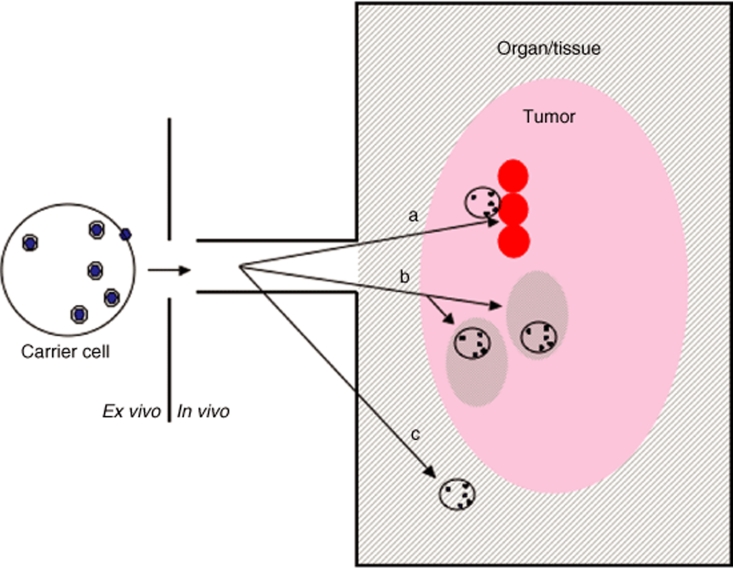Figure 3.
Levels of tumor targeting by cell carriers. (a) Direct targeting to tumor cells. If the cell carrier recognizes a determinant, which is expressed directly on/by the tumor cell, it can deliver the loaded virus directly to the doorstep of the tumor cells. An example of this is the recognition of tumor-associated antigens by antigen-specific T cells. In such cases, the cell carrier (T cells) must traverse endothelial cell barriers at the tumor site, penetrate through any tumor-associated stroma and access the tumor cell directly. (b) Targeting tumor-associated properties. Several cell types do not recognize tumor cells per se but rather the microenvironment created by them. Examples include the homing of macrophages to tumor-associated hypoxia, trafficking of mesenchymal stem cells to areas of tumor-associated cytokine production, or the recruitment of endothelial cells to tumor-associated angiogenesis. In these cases, the carriers will deposit the viruses in “neighborhoods” within the tumor, with the hope that they will be able to diffuse the short distances required for productive infection of the tumor cells themselves. (c) Targeting tumor locations. Certain cell carriers may have no tumor-associated specificity at all. Instead, they may demonstrate intrinsic trafficking to specific organs or tissues. If tumor is known to reside within these specific locations, the cell carriers can be used to deliver their payloads into the territories within which tumor will be found. An example is the use of normal, nonspecific T cells or other immune cells, which naturally home to lymphoid organs. We have shown that targeting oncolytic viruses to lymph nodes using peripheral blood lymphocytes, or dendritic cells, preloaded with oncolytic viruses can effectively purge these organs of tumor cells (see text).

